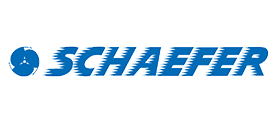Atlantis Rail Systems Common Questions (FAQ)
We've gathered the most commonly asked questions about Atlantis Rail Systems. If your question isn't answered here, you may also contact us with any questions you may have.
RailEasy Cable Railing
What is RailEasy cable and hardware made of?
RailEasy cable and fittings are made of extremely corrosion resistant type 316L stainless steel.
How many cable runs do I need?
Determine cable rows by dividing the distance between rails by 3 (round down to the nearest whole number) and subtracting 1. For example, a 36” tall railing with 34” between deck and bottom of top rail would require 10 rows.
What is a tensioner?
A cable railing tensioner keeps strands tight and is used on both ends of straight sections greater than 25 feet. Straight sections less than 25 feet use a tensioner at one end with a swivel end at the other.
When do I use a tensioner or a swivel end?
Straight rail sections that are larger than 25 feet require a tensioner at both ends. Straight sections less than 25 feet use a tensioner and swivel end. Do not use swivel ends at both ends of the cable section.
What is RailEasy?
RailEasy is a cable railing system by Atlantis Rail Systems. It provides all hardware and cable needed to create cable railing between new or existing wood and metal posts.
How long can cable rail span?
Atlantis Rail System recommends that cable stays within 4' section lengths to maintain structural integrity. If your section length exceeds 4 feet, a cable stabilizer can be used to minimize cable deflection. The cable stabilizers (also known as intermediate posts) can be placed every 4 feet. Never exceed a spacing of 60” between posts. For each foot over 4 feet your cable runs, you must move your cable 1/4” closer together.
How far should cable be spaced?
Cable should be spaced 3" on-center on posts to comply with nationwide building codes.
What is a swivel end?
A swivel end is used in conjunction with a tensioner to tension cable. Straight sections less than 25 feet use a tensioner and swivel end. Do not use swivel ends at both ends of the cable section.

























